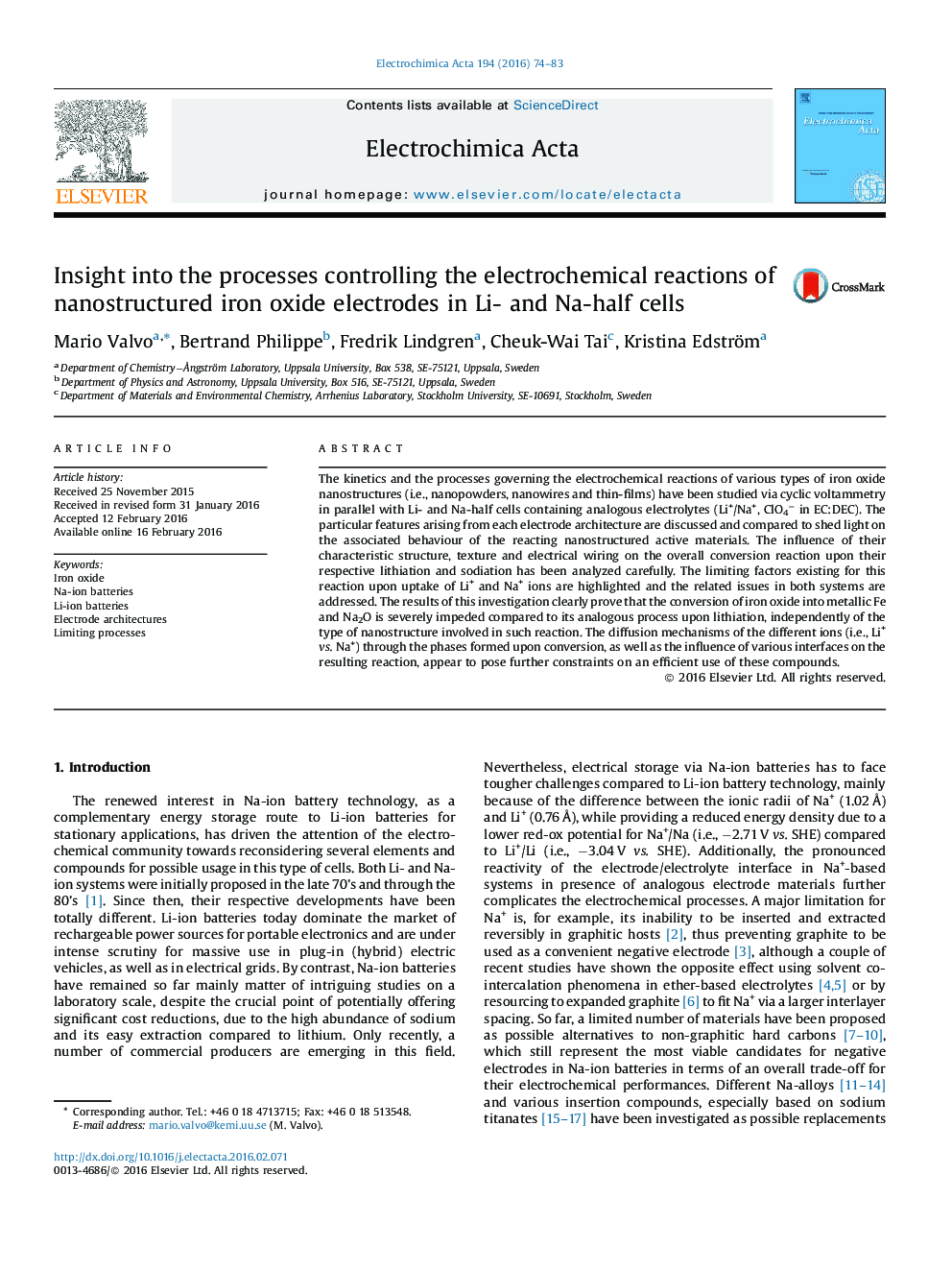| Article ID | Journal | Published Year | Pages | File Type |
|---|---|---|---|---|
| 183100 | Electrochimica Acta | 2016 | 10 Pages |
The kinetics and the processes governing the electrochemical reactions of various types of iron oxide nanostructures (i.e., nanopowders, nanowires and thin-films) have been studied via cyclic voltammetry in parallel with Li- and Na-half cells containing analogous electrolytes (Li+/Na+, ClO4− in EC:DEC). The particular features arising from each electrode architecture are discussed and compared to shed light on the associated behaviour of the reacting nanostructured active materials. The influence of their characteristic structure, texture and electrical wiring on the overall conversion reaction upon their respective lithiation and sodiation has been analyzed carefully. The limiting factors existing for this reaction upon uptake of Li+ and Na+ ions are highlighted and the related issues in both systems are addressed. The results of this investigation clearly prove that the conversion of iron oxide into metallic Fe and Na2O is severely impeded compared to its analogous process upon lithiation, independently of the type of nanostructure involved in such reaction. The diffusion mechanisms of the different ions (i.e., Li+vs. Na+) through the phases formed upon conversion, as well as the influence of various interfaces on the resulting reaction, appear to pose further constraints on an efficient use of these compounds.
Graphical abstractFigure optionsDownload full-size imageDownload as PowerPoint slide
